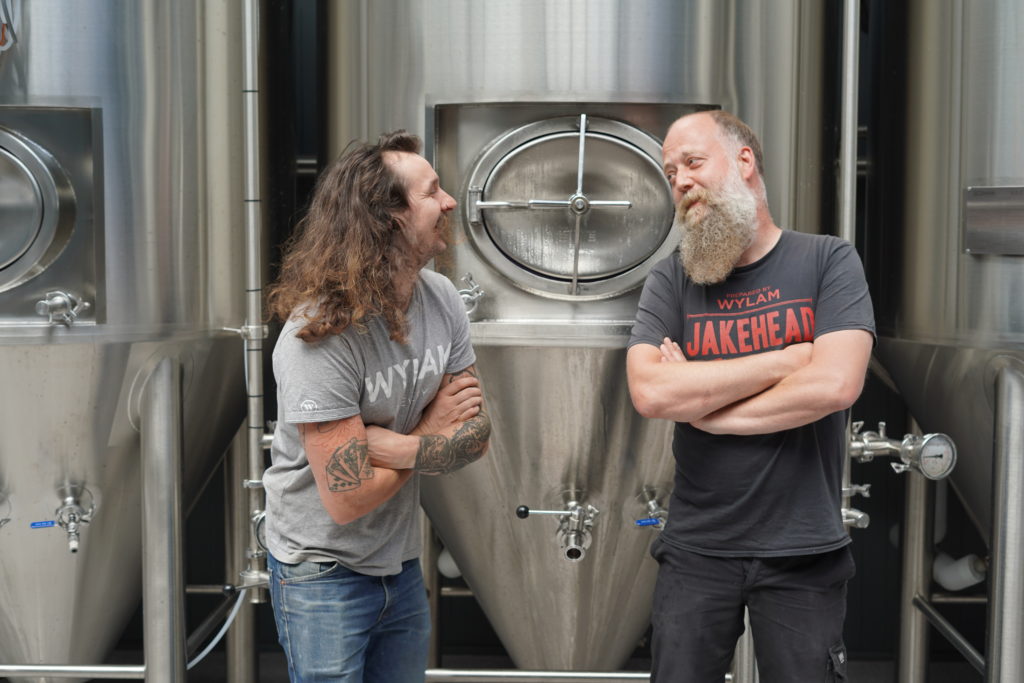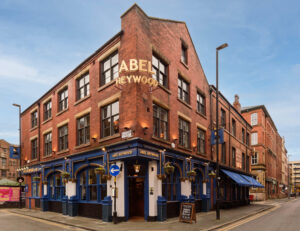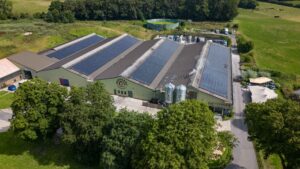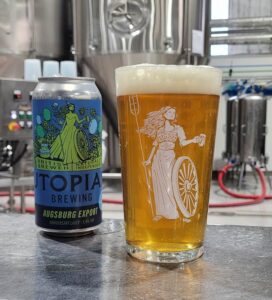Everyone hopefully knows someone like Dave Stone. He’s the uncle that would slip you a crisp £20 note in your birthday card when you’re a child, at a time when you thought you’d be lucky enough to get a tenner. He is carried by a youthful enthusiasm, but don’t let that draw your attention from his insatiable appetite for perfection, either. He’s the epitome of the idea that if you enjoy your work, it doesn’t really feel like work at all.
Stone is a Liverpool native, but Newcastle is truly his adopted home and it’s here his path crossed with that of Wylam Brewery, now one of the most respected modern UK breweries around. But it was not always thus and the successful Wylam of 2018 is a different animal to its previous existence as a traditional farmstead operation founded nearly 20 years ago. Alongside business partner Rob Cameron and the team, he’s helped catapult the brewery to the frontline of great UK beer. All this before you even get onto discussing their home, the literally palatial Grade Two-listed Palace of Arts in Exhibition Park.
But such achievements aren’t enough for Stone. As of summer 2018, the Tyne now has a new destination spot for food and drink lovers in the form of By The River Brew Co. It’s already hard to imagine the area without it.
“There’s always time in the day to do something else, something new. And it has been really important for us to put in the hard work to make Newcastle as good as it can be,” explains Stone, perched with his beloved River Tyne behind him. “This city has moved on so much in the last decade. So much has developed, and not just the beer scene,” says Stone. “Newcastle has reinvented itself and is no longer purely industry. Sure, what we’re doing at Wylam is part of an industry. But thankfully it’s one that gets you pissed.”
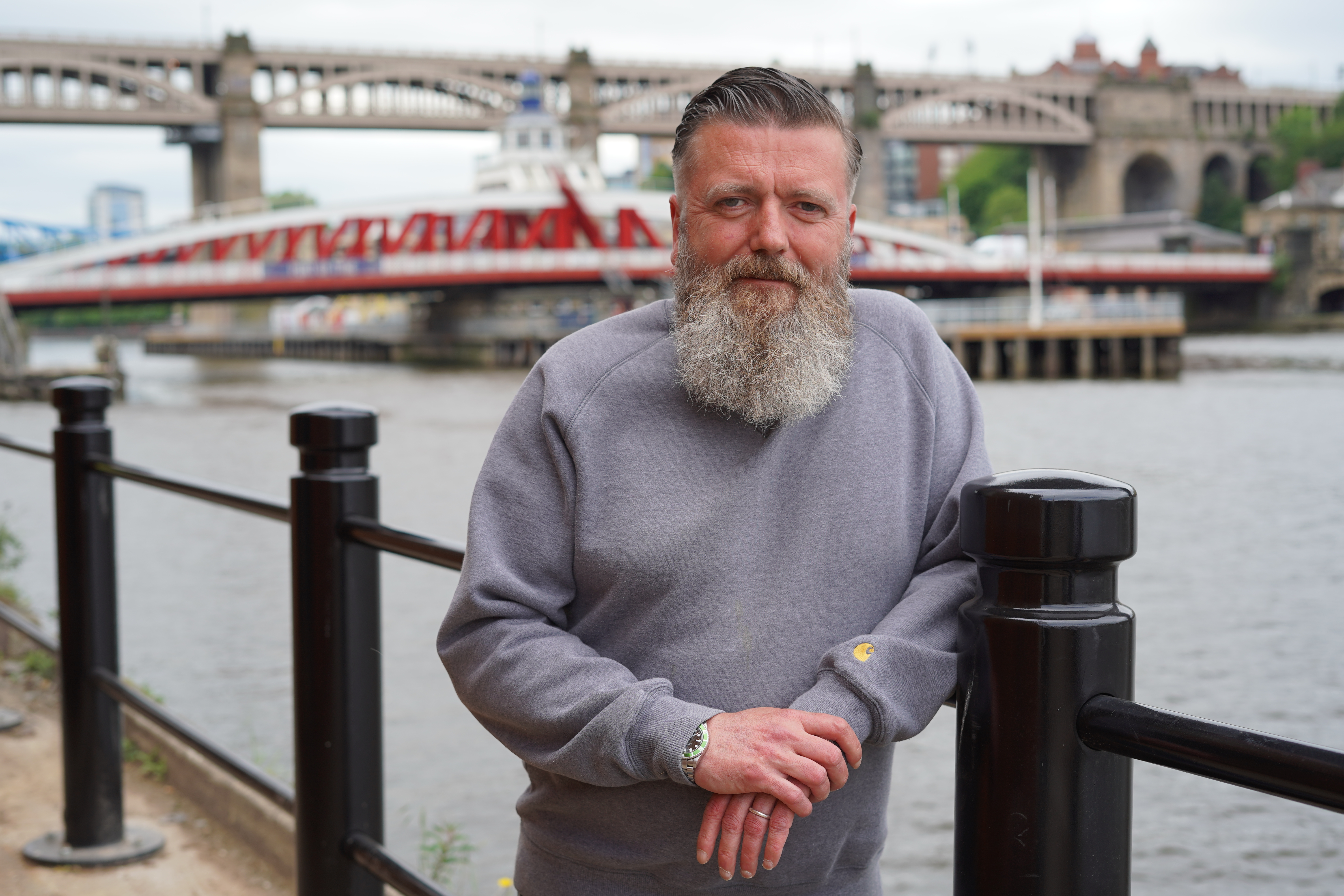
Dave Stone, June 2018.
Wylam Brewery was founded in 2000 by John Boyle and Robin Leighton. Based out of South Houghton Farm, Heddon on the Wall, Leighton’s beers such as Gold Tankard and Landlord’s Choice resonated with local drinkers. But the duo’s working relationship was relatively short-lived. Leighton retired three years later and has since sadly passed away.
Boyle called on his son Matt to move home from Spain and help take the reins, something he eventually agreed to. With John Boyle himself retiring, Robin built a team that included Ben Wilkinson, Christopher Lee and Lee Howourth, a trio that are still with the brewery today.
Elsewhere, Stone and business partner Cameron were tiring of their careers in the music industry. In addition to owning a nightclub, the duo helped organise Evolution Festival as well as Digital Brighton and Digital Newcastle. But like any field, fashions come and go, and Stone soon fell out of love with the type of music people wanted to hear.
“We were in Amsterdam around eight years ago and all people wanted was EDM (Electronic Dance Music). We were having to book DJs that were overpriced, had inflated egos and produced music we didn’t like,” says Stone. “So we sat down and asked ourselves what we liked as much as music. And that was beer.”
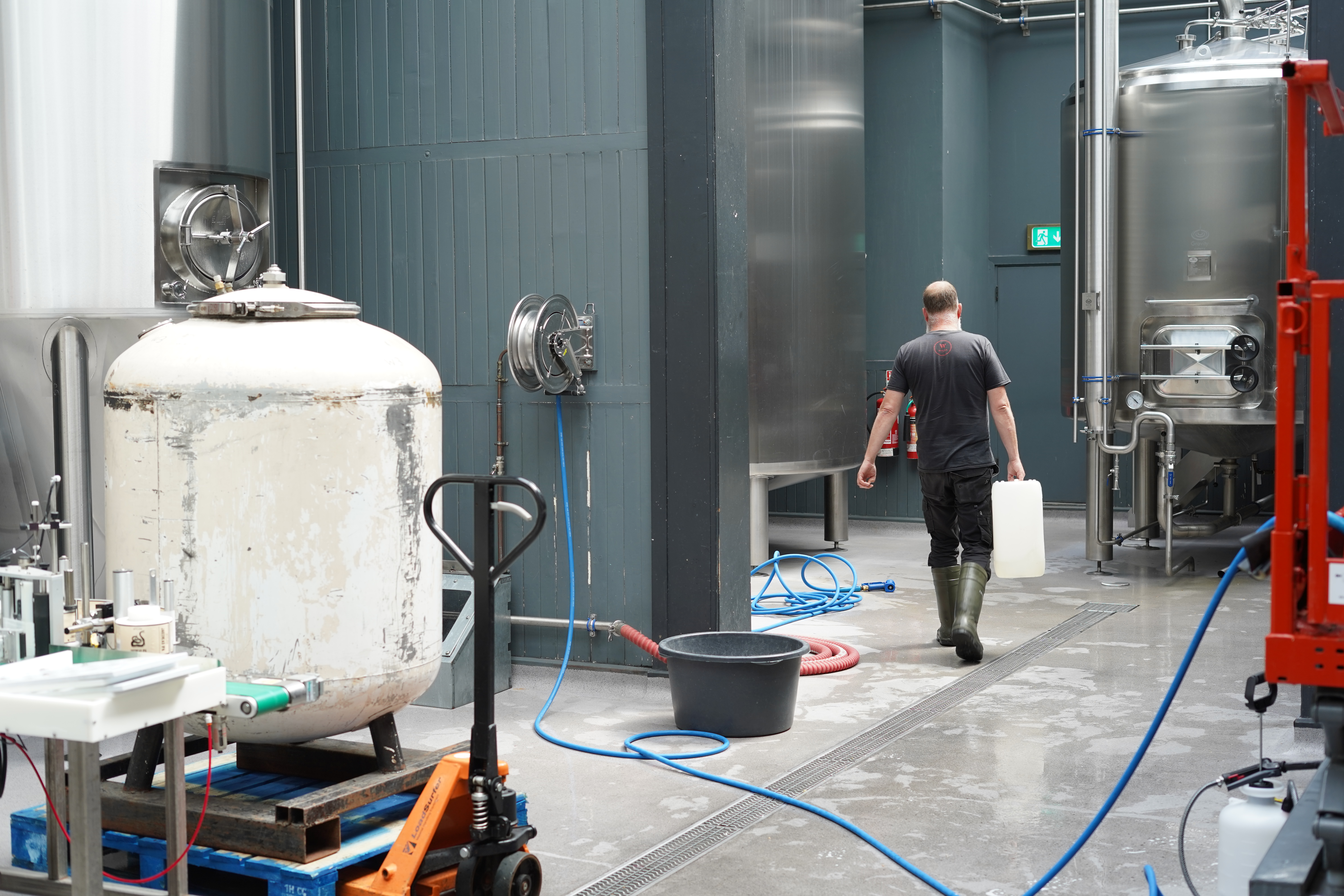
Stone and Cameron proceeded to sell their club and the stake in the festivals. Not ones to rest on their laurels, they put their money where their mouth is and bought two pubs in the form of The Bridge Tavern and Town Wall.
These pubs rapidly became Wylam’s biggest customers and with Stone, one the brewery’s biggest fans and advocates.
“They made great liquid. And for me, it’s all about the liquid. You can have fancy branding but if the liquid isn’t good, your product isn’t good,” he says.
Stone and Cameron decided to spend some time in the US to see how the scene was developing. What greeted them enthused the duo and back home, they took the decision to approach Wylam and see how they can formalise their partnership and buy into the brewery. The idea proved logical for both parties and in Stone’s words, the duo “sat on their hands” for the first two years and let the business continue in kind. But thanks to the demand for its growing portfolio of excellent beers, they knew Wylam had to move site to realise its potential, and with that, a new home at the Palace of Arts came into view.
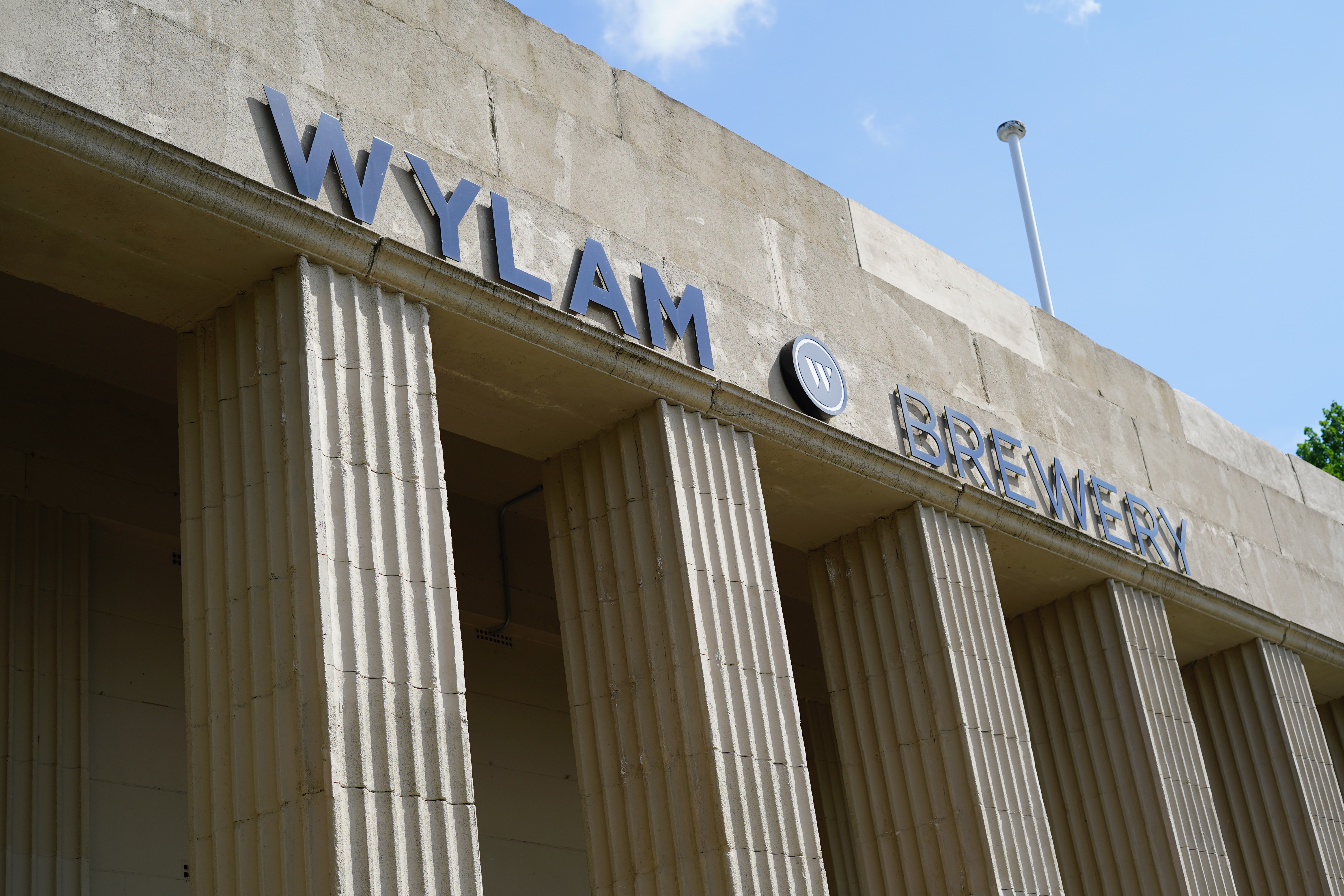
Located in Exhibition Park, Newcastle, the Palace of Arts is the last remnant from North East Coast Exhibition of 1929. Back then it was used to house works of art and promote the region’s skill and industry. It fulfilled a number of different purposes and was home to the Military Vehicle Museum at the time of closing in 2006. The Palace of Arts was in a state of disrepair and was set for demolition but thanks to Freddy Shepherd and his brother Bruce, the former owners of Newcastle United, the building was saved in 2012. Three years later and through more than £3m in refurbishments, the site had regained its splendour. But the idea of a brewery then taking over such a space did not sit well with everyone.
“We wanted somewhere to call home. We looked at options in the city but none could match the Palace of Arts. Along the way we were greeted with 148 objections to the planning, lots on all sorts of scurrilous levels. But we went to planning committee and won 9-1. The rest, they say, is history,” explains Stone.
Objections to the traffic and noise the brewery would create seem laughable when you approach the site in person. Granted, the venue hosts parties, concerts and other events but for a facility located in the middle of a large park, noise issues for its neighbours were never going to be a problem. And thankfully for drinkers, those hurdles were overcome.

Transforming the palace in its then form to Wylam’s home of today took two years of planning and 13 weeks on site.
As Stone tells us: “When we get busy, we get busy”.
“It took a while for people to work out what they wanted from the space but to have it as a brewery, and its own independent facility is rewarding,” he explains. “When you see a tour poster for someone like Billy Bragg and their dates show somewhere like the Shepherd’s Bush Empire and then Wylam Brewery. That’s great to see, it gives you a real buzz.”
As the Palace of Arts’ role and importance to the community has grown in the recent years since Wylam moved in, so has the brewery’s wider standing in the brewing industry. Much has changed in the world of Wylam since those early days at the turn of the millennium.
“When we started in 2000 we were making beers that other people weren’t making. We couldn’t particularly sell them but we could drink them, that’s for sure. In 2000, cask beer was the type of challenging drink of its day, so it was a case of the team making the best beer possible and educating the drinker of its merits,” says Stone.
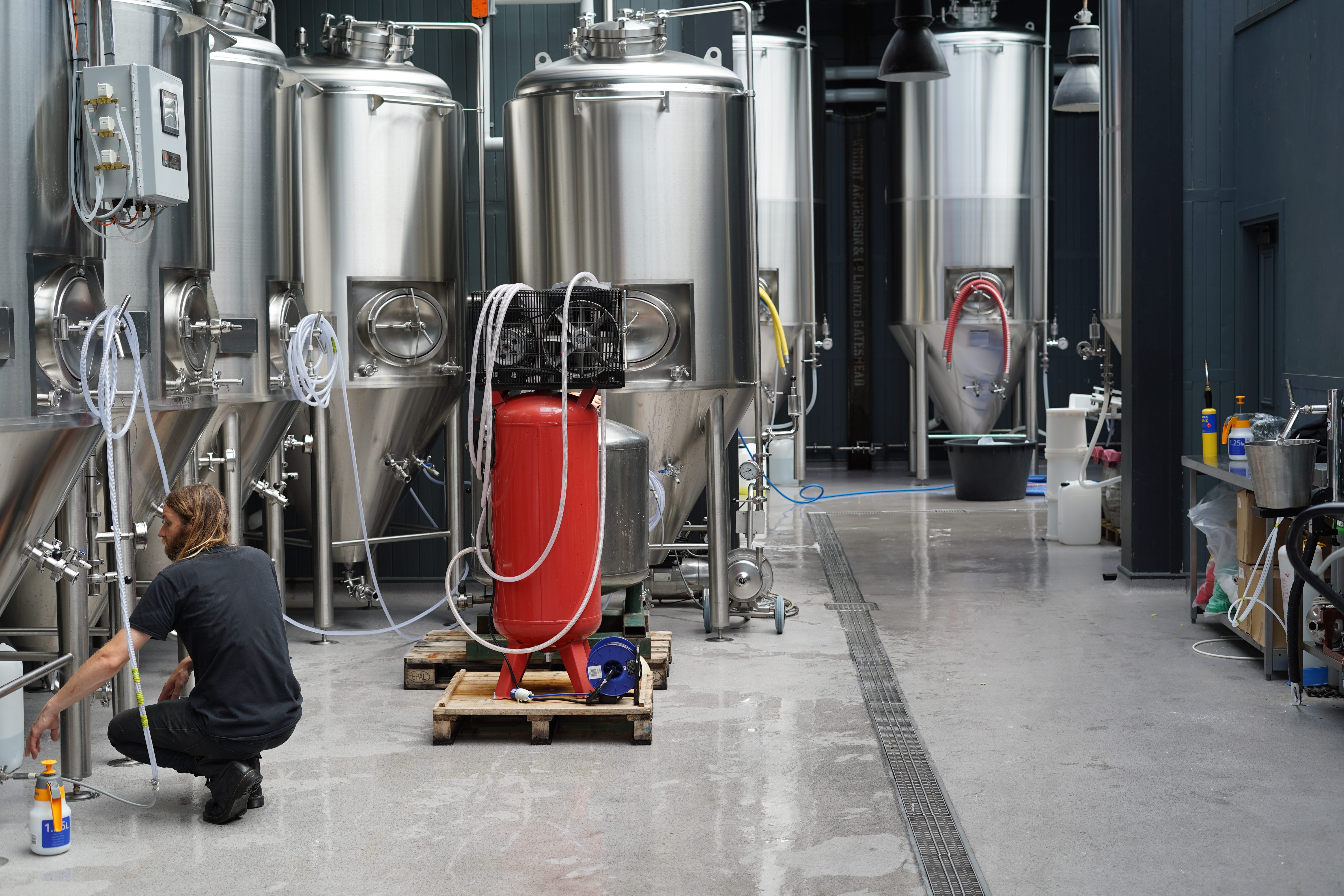
He adds: “Fast forward to now, the process is pretty much the same in terms of how we make our beer. It’s just fantastic now that we can put out beers that we really, really like. But I often think how many breweries can’t do that, especially considering they are working in a creative industry.
“It must be frustrating because they are all tied to demands that mean they only make one to two beers in the 3.8 to 4.2% range, while having to hit those strict margins. But here, we make the beer, work out how much it costs and then how much we need for it. We are fortunate that people want it.”
Wylam’s brewing spine of Ben Wilkinson, Christopher Lee and Lee Howourth is like that of any successful football team. It’s given them longevity, and everyone is on the same page. Captain of that team, though he’d loathe any sort of hierarchical badge, is Wilkinson. He joined Wylam less than a year into its life.
Running a free house in the Ouseburn Valley had given him a wealth of knowledge in cellar management. The pub, which offered drinkers a selection of Belgian beers in addition to its local ranges, also sold Wylam beers, just as Dave Stone and Rob Cameron’s pubs did many years later. But Wilkinson wanted to take his love of beer beyond the pub and his homebrewing hobby.
“Way back then I asked them if they wanted any help and they told me to come in the next day. I was cleaning, driving, whatever they asked of me,” he recalls.
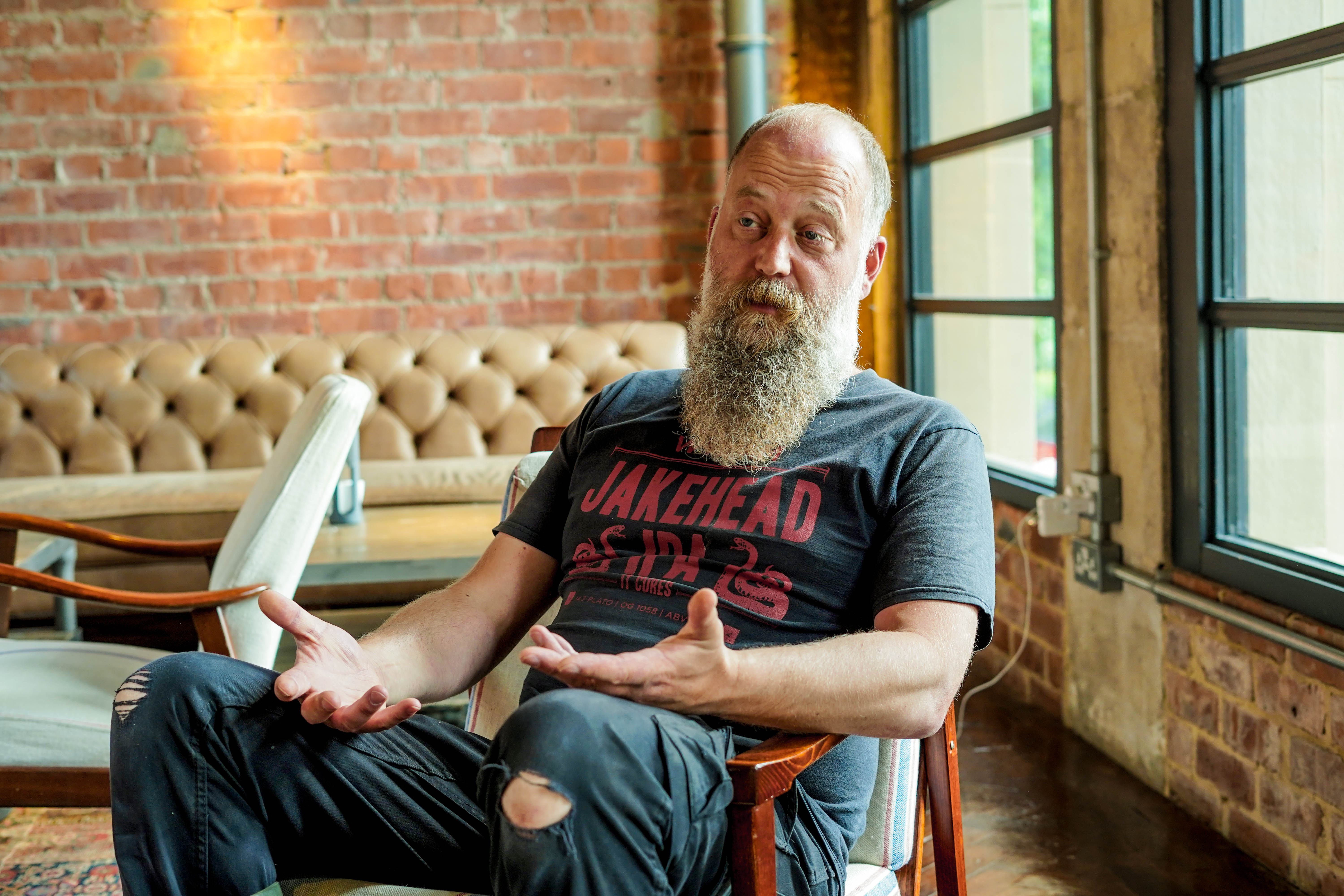
Wylam Brewery head brewer Ben Wilkinson
That arrangement lasted around 18 months before Wilkinson made the full-time switch. Working with then head brewer Robin Leighton, eventually becoming head brewer himself in 2012.
“We started brewing IPA long before before the trend jumped across the pond. We learned a lot from the US and beers such as Jakehead proved to be a real turning point for us. It combined an old world malt bill and a new world hop profile,” he explains. “It was one of the first beers produced at the old site that was really different to what came before.”
Jakehead, a 6.3% IPA came kicking and screaming into life seven years ago. But its popularity meant treading a fine line in producing sufficient volumes to cater for demand, while also brewing enough of the lower ABV beers that resonated so well with other local drinkers. Thankfully that’s no longer an issue with the increased capacity, and incoming additional tanks, at the Palace of Arts.
The brewery has successfully managed to keep both sets of drinkers happy. Though a ‘Futureshock’ DDH IDA or a ‘In Every Dream Home A Heartache’ DDH Sour Mash IPA are somewhat of a leap from the 4.0% cask ‘Gold Tankard’ Golden Ale many of its patrons would be used to.
“When we started producing these type of beers, it would have been a hard sell to some of the older pubs. But by then there was another craft base opening up. The proliferation of these bars and bottle shops has really helped, and we appreciate their support,” says Wilkinson.

Wylam, like breweries such as Cloudwater, Verdant and Northern Monk among others, are now producing high volumes of heavily-hopped IPAs. These beers carry a higher price tag, and frequently a higher ABV than many drinkers would be used to. But they are selling, and they’re selling well. And Wilkinson sees no reason why that will come to a stop anytime soon, either.
“This style has legs, no question about it. And it’s still relatively new on this side of the water. Look at the States, it has been going on there for much longer, and people are really making Hazy IPAs their own. It’s not one blanket style. We’re seeing that here too. We all have our trademarks, our nuances and our own personalities. I love the history of IPA and the way the style has developed. This is one part of its development,” he adds.
Wilkinson believes that drinkers, slowly and surely are coming around to why certain beers cost more, too.
“It’s become more apparent over time that people are willing to pay more for quality beer, beer that features expensive ingredients. Nobody is going to go out a buy an eight pack of a 9% DDH IPA and knock them back. It’s all relative. A lot of these beers are made of sharing, they’re communal experiences just like a fine wine or a great whisky,” he explains. “And when you’re dealing with expensive ingredients where you lose anywhere between 15-20% of the yield just off the dry-hopping and run-off throughout the process in order to keep everything unfiltered and unpasteurised, then it all adds up.”
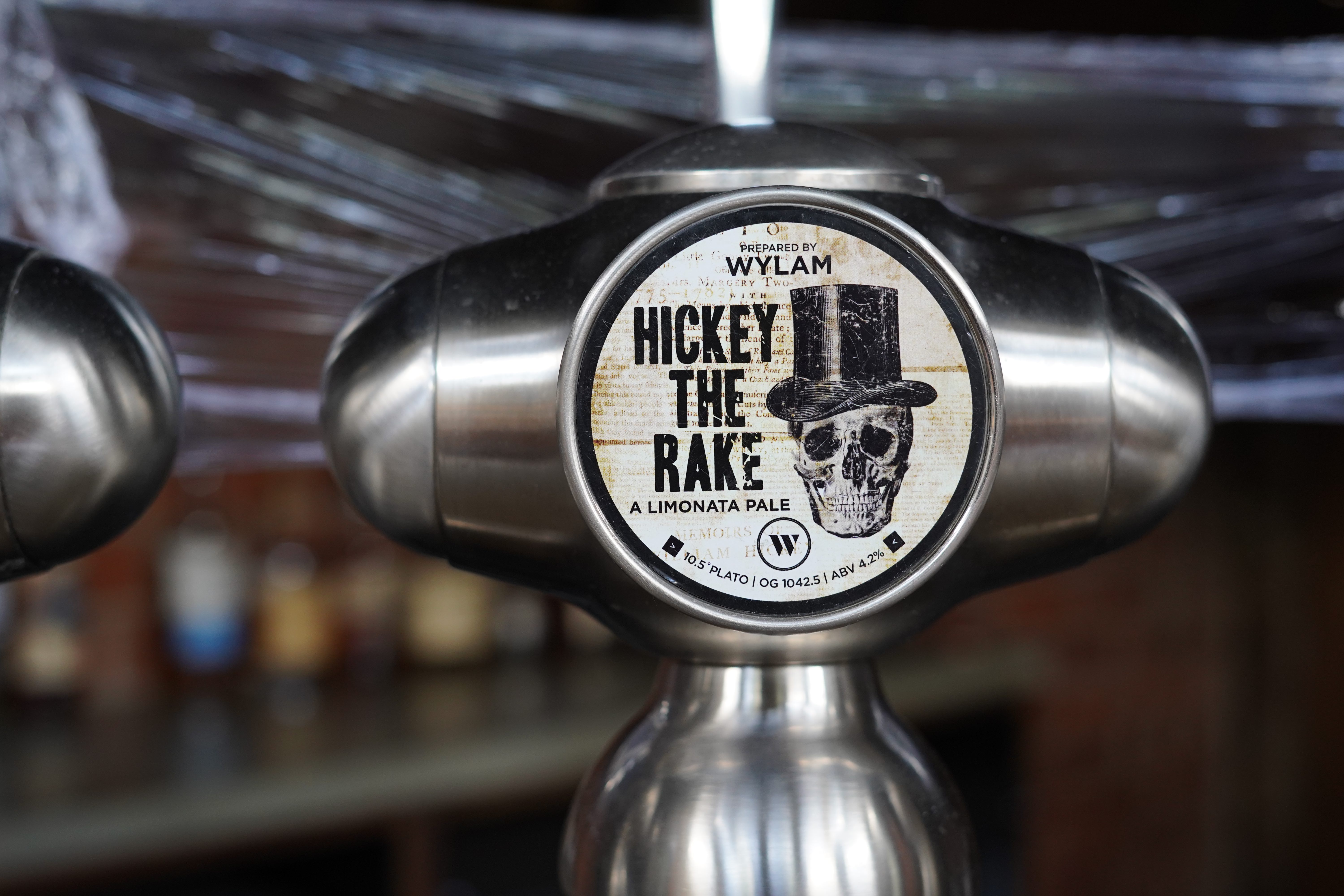
Wylam brew on a 50HL kit from Gravity Systems, and they have the capacity to double brew therefore producing up to 100HL a day. At the time of writing, they have nine 30 barrel tanks, two 60 barrel tanks, six bright tanks and an additional three 30 barrel tanks on order.
Every last drop of that capacity was required to allow the team to recently produce its fantastic Northern Powerhouse collaboration series, all while producing its regular range of beers. Wylam teamed up with Buxton, Cloudwater, Black Lodge, Magic Rock, Northern Monk, Hawkshead, Thornbridge, and Box Social on the project. The end result was 6,600 cases of beer, each containing eight limited edition 440ml cans.
“It was quite tricky working it all out over a five month period,” says Wilkinson. “What was important was to produce all of the beers that were going to last well and get better from a little bit of ageing at the start of the process, and then work all the hop-forward beers at the end of the process. Around that, you do everything in-between to snake it’s way towards the finale! The brewing bit was a challenge but the most daunting part was getting everything packaged in that box with all the lovely artwork go out into the wild on time.”
The Northern Powerhouse project, logistical challenges aside, allowed Wilkinson to engage in one of his favourite parts of the industry, collaboration. Wylam has teamed up with a number of breweries from the UK and further afield in recent years, and it’s something Wilkinson would like to see continue, as long as it’s done for the right reasons.
“It’s important that you can pick out each brewery in the finished product. A lot of people had not heard of us until two or three years so it’s nice when people are sometimes surprised that we’ve been going a lot longer than that,” he tells us. “The industry has improved for the better tenfold in that time. I know there’s often talk of brewing losing the community qualities that make it so great, but I don’t see that. We are seeing new breweries open all the time and at the end of the day it’s down to liquid. That’s what counts. I think there’s still room for everyone to grow because there’s an ever-increasing number of people that turning onto good beer, and once they make that move over, they don’t tend to go back.”
And Wilkinson believes keg beer has been the key driver in aiding that all-important transition.
“In those early years, it was more of a challenge to convince people of the merits of beers like ours. It was predominantly cask and one of the main problems for someone that is used to drinking keg lager is the change in mouthfeel. They’ve gone from something that is fizzy on the tongue to something that’s not,” he says. “ But now, with so much more keg beer around, the mouthfeel issue has been pretty much eliminated. It has enabled people to develop their palates by trying styles and judging them on flavour rather than being confused and confronted with a sensation they’re not used to.”
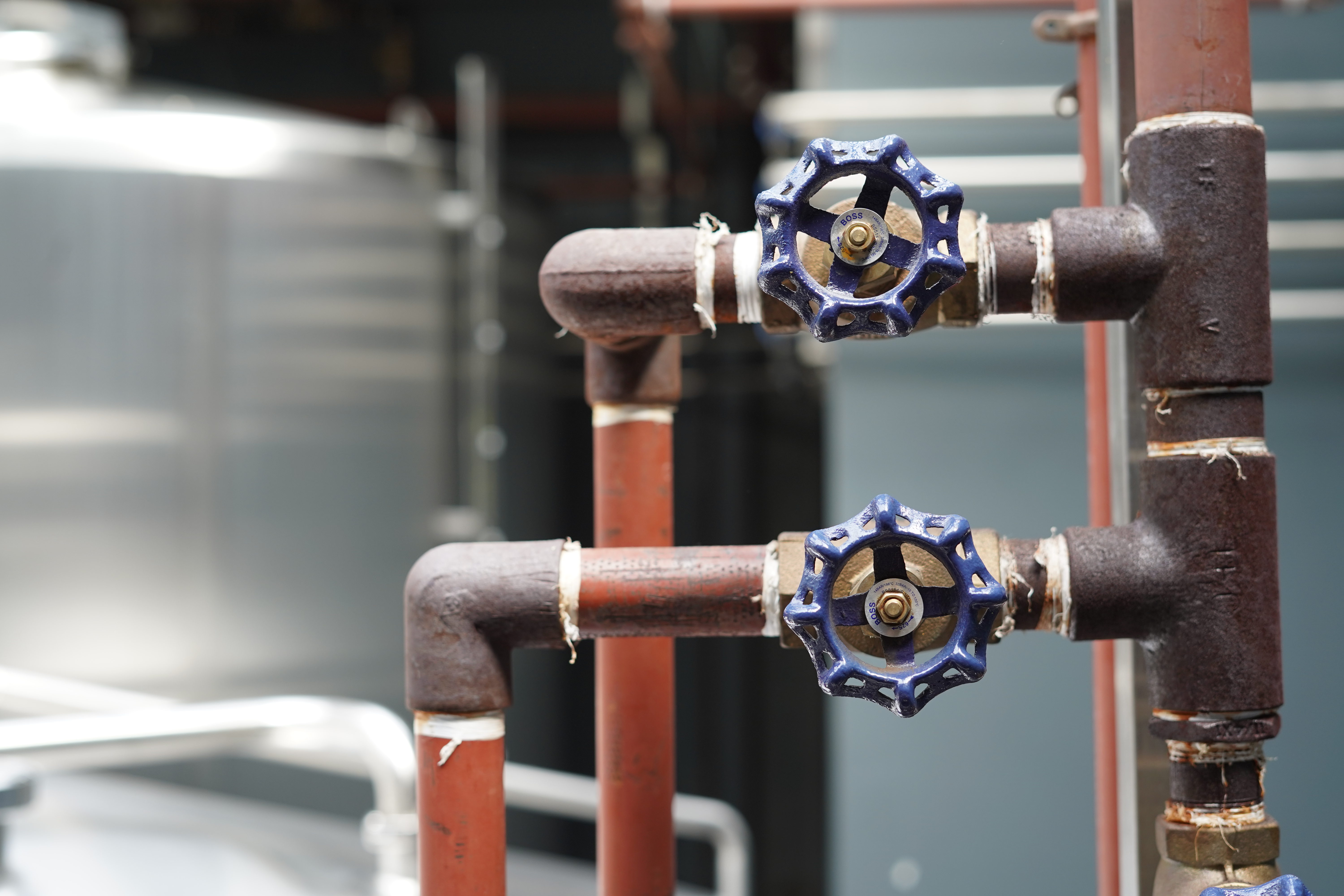
Growth in keg, which accounts for 70% of its output, has seen Wylam narrow down its cask selection. The brewery offers three permanent cask beers as well as seasonal, one-off numbers. But one thing that Wilkinson remains as keen on as ever is experimentation in styles, and Stone and Cameron’s new setup, the aforementioned By The River Brew Co will allow him to do just that.
A 15 barrel kit from SSV Limited allows Wilkinson to produce new beers, away from the production setup of Wylam’s larger kit. Beer pours from 20 taps at the bar that is an integral part of the new container community that also houses a restaurant, market and bike shop.
Wilkinson, Stone and the team are all on board with what they want from the new setup, and from the future of Wylam, too.
“We don’t have desire to upscale production pass those extra tanks. That investment will help us keep the local market satiated because I’ll be honest, the local market has suffered a bit this year,” says Stone. “People across the globe want our beer but we can’t let down the people that have helped get to where we are today. Without them, you’d be nothing.”
He adds: “Going forward I want to continue focusing on the quality of the liquid because there comes a point in a brewery’s where they might have the option to get bigger and bigger. Some will be able to do that while putting out beer at the same standard people are used to. But some don’t. They are more focused on pushing out liquid ready for a certain date and as a result, the process is rushed and quality is affected.”

Wilkinson agrees: “One we get the extra tanks, I’ll be happy at that size. I don’t want to turn into a factory because I’ve seen what happens and I’ve tasted what happens when that takes place. I want to get more dialled into and on top of what we’re doing. We like being hands-on and we’ve got a great team here we so don’t want to get too big. We don’t want to lose sight of that.”
And like Wilkinson earlier, Stone sees plenty of room for growth in this industry, as long as the beer is good enough. If it’s not, then closures will come as no surprise to him.
“Brewing, for many, has become the new midlife crisis investment in a red Porsche. You’’ have people leaving their jobs, maybe even their families to start a new life in brewing, often without any knowledge of the industry. They’ll soon realise that you need more than a cool label to get you anywhere,” he explains. “That part of the market will suffer, as the drinker becomes more educated and it’s our mission is to educate as many people as possible so they know more about beer.”
Stone adds: “I find it incredible that I can go into a train station mini supermarket now and get a great can or two, when several years ago that would have been impossible. And then you’ve got lots of new bottle shops opening up, although they’ll have to start renaming themselves can shops before long.
“I think that the more penetration we can get into the mainstream market the better. If smaller breweries like ourselves can form some sort of Entente Cordiale with some of the biggest breweries, then I think that’s one route to success. I don’t feel as if we need to diametrically oppose ourselves to these businesses. Many of them have thousands of pubs, so why can’t we help complement their own brands? There should be a place in the market for all of us.”

It’s that type of positive, affirmative can-do attitude that underpins Stone and his outlook on both business and life. With By The River Brew Co already a success, weeks after launch, few would want to bet against what comes next.
He recalls: “As Bob Dylan said, when you’ve got nothing, you’ve got nothing to lose. Caution doesn’t register with me because I know we will work hard enough to make something work and to be a success.
“Look, there has never been a better time to brew and drink beer. You have the proven knowledge of the past along with the technology of the future.
“So let’s have a party.”

